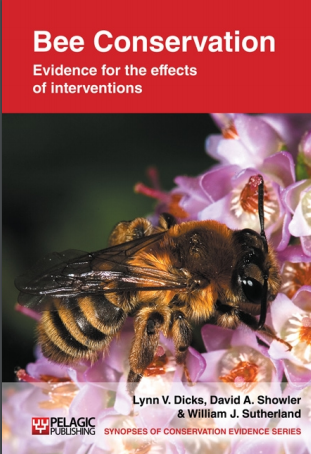Reduce the intensity of farmland meadow management
-
Overall effectiveness category Awaiting assessment
-
Number of studies: 4
View assessment score
Hide assessment score
How is the evidence assessed?
-
Effectiveness
not assessed -
Certainty
not assessed -
Harms
not assessed
Study locations
Supporting evidence from individual studies
In a replicated trial in Switzerland (Knop et al. 2006), 21 hay meadows managed under the 'Ecological Compensation Areas' agri-environment scheme for three to 10 years had more species of wild bee and more individual wild bees than 21 paired conventionally managed hay meadows. There were 13 species/field, 11 individuals/survey under the agri-environment schemes, compared to 11 species/field and 8 individuals/survey on conventional meadows. This agri-environment scheme requires a postponed first cut, in June or later, and no additions of fertilizer or pesticide to the meadow, although in the study three of the trial meadows were fertilized a little, despite the regulations.
Study and other actions testedIn a similar replicated trial in the Netherlands (Kohler et al. 2007), an agri-environment scheme aimed at enhancing habitat for birds by reducing fertiliser and pesticide input and delaying cutting or grazing had no impact on diversity or numbers of non-Apis bees in 21 Dutch wet meadow fields when compared with paired conventionally managed fields. Bee diversity and abundance was low in both field types (average <3 species/field; <6 individuals per field). However, this agri-environment scheme allowed application of nitrogen fertilizer at 206 kg/ha, which is 75% of the standard fertilizer application rate (269 kg/ha). The meadows had been under the scheme for between three and 10 years.
Study and other actions testedA replicated trial of 13 meadows under the Swiss Ecological Compensation Area agri-environment scheme in 2004 found that the species richness and abundance of solitary and social bees visiting potted flowering plants were higher in meadows under the scheme than in adjacent, intensively managed meadows (Albrecht et al. 2007).
Study and other actions testedA randomised, replicated, controlled trial on four farms in southwest England (Potts et al. 2009) found that 50 x 10 m plots of permanent pasture managed more extensively without fertilizer or without grazing, and/or with a higher cutting height or reduced cutting frequency did not support more common bumblebees Bombus spp. than control plots conventionally managed for silage. There were twelve replicates of each management type, monitored over four years. No more than 2.2 bumblebees/transect were recorded on average on any grassy plot in any year.
Study and other actions tested
Where has this evidence come from?
List of journals searched by synopsis
All the journals searched for all synopses
This Action forms part of the Action Synopsis:
Bee Conservation
Bee Conservation - Published 2010
Bee Synopsis





)_2023.JPG)














